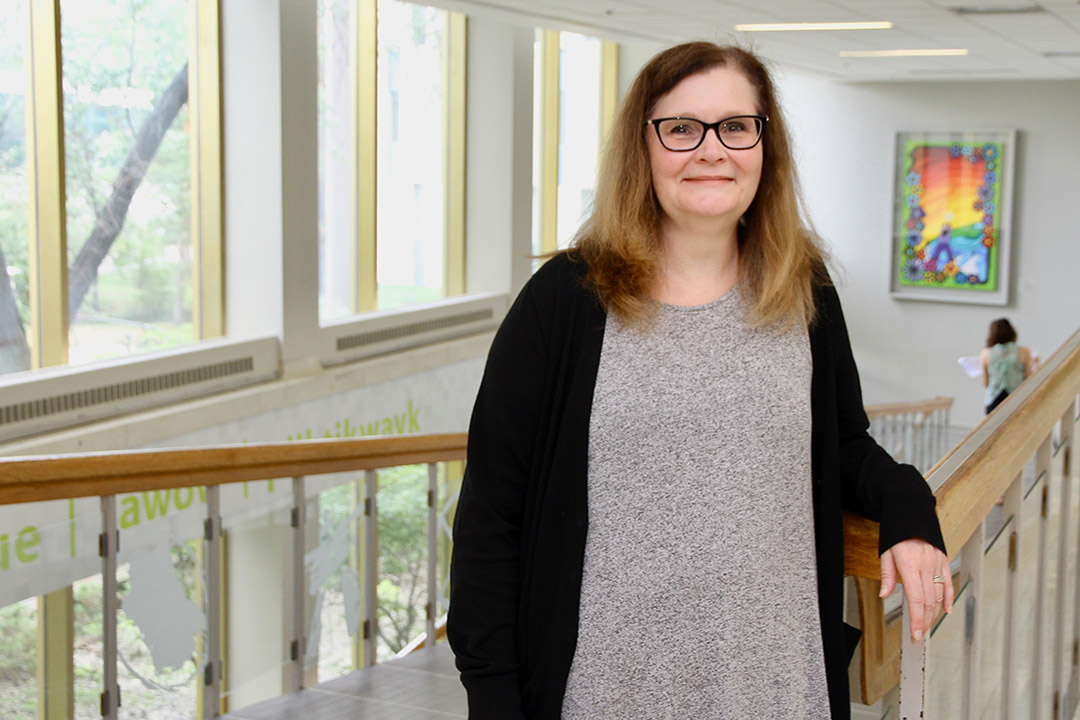
Probing reasons for deferred motherhood
University of Saskatchewan researcher Karen Lawson is studying the psychological and social factors behind an increasing number of Canadian women delaying motherhood, a trend that has ramifications for women themselves and for the country’s societal and economic future.
By Sarath PeirisThe national birth rate for women in their 20s has been decreasing. About one-third are waiting until they are over age 30 to have their first child, for reasons such as career advancement, financial stability, and education, according to Lawson, a professor in the psychology department.
The less positive repercussions of the trend, at the personal level, include the reduced fertility of women after age 28 that limits their reproductive capabilities. At the societal level, the decline in fertility rates in Canada to 1.61 children per woman—well below the replacement level of 2.1—has implications for the economy, labour force, tax base and social safety net, because projected immigration won’t fill the gap.
“This study will contribute to fostering informed reproductive decision-making in a way that will benefit women, families and society,” said Lawson, who was recently awarded an Insight Grant of $87,000 for the project, by the Social Sciences and Humanities Research Council of Canada.
Deferring motherhood to a later age can lead to difficulty in conceiving a child, having fewer children than desired, or involuntary childlessness, said Lawson. Among the common misbeliefs of women is the vast overestimation of the longevity of their fertility, and the success rate of medical interventions in addressing fertility problems, she said.
“I don’t want to advocate that women should be having their children earlier, or that they should be waiting to have their children,” said Lawson.
The goal is to learn about the factors behind women’s decisions on when or if they want to have children, and to help develop public policies that support their choices.
“We’re all about helping women make informed reproductive decisions,” said project co-applicant Pamela Downe, an associate professor in anthropology with whom Lawson has done previous research on women’s reproductive intentions.
Lawson and Downe will interview 60 women in Saskatchewan between the ages 18 to 45 with varying reproductive intentions or outcomes, focusing on why and how they decided on the timing of motherhood.
Factors such as personal attitudes, interpersonal relationships, available supports, and workplace practices that pose a societal barrier to earlier childbearing, will be part of the discussion. Specific issues raised in the 60 interviews will be explored in a detailed questionnaire given to a nationally representative sample of 1,000 Canadian women who are childless but intend to have children.
What’s learned can guide the development of public programs and policies that support individual reproductive choices while meeting the national objective of having a stable population that can support economic and societal goals.
“Most social policy attempts worldwide to help families achieve reproduction goals have involved extrinsic rewards such as baby bonuses that for the most part have been dismal failures,” said Lawson. “Policymakers need to identify how women perceive barriers that prevent them from achieving their reproductive goals, and the personal meanings women attach to their reproductive decisions—what’s most important and salient, such as available community resources and child care strategies—and target those areas.”

